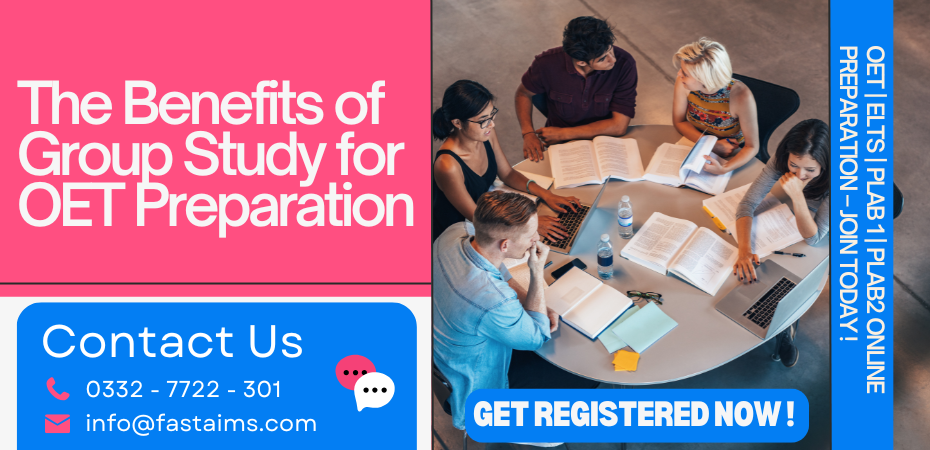How to Tackle OET Listening: Tips from Experts
The Occupational English Test (OET) is a language proficiency exam designed specifically for healthcare professionals who wish to work in English-speaking countries. One of the key components of the OET exam is the Listening sub-test, which tests your ability to understand spoken English in medical contexts. For healthcare professionals, this is crucial as it assesses how well you can comprehend medical information and respond to real-life situations in a clinical setting.
In this article, we’ll explore expert tips and strategies to help you tackle the OET Listening sub-test with confidence. Whether you’re a doctor, nurse, pharmacist, or another healthcare professional, these strategies will equip you to improve your listening skills and perform well on the exam.
1. Understanding the OET Listening Sub-Test Format
Before diving into tips and strategies, it’s important to understand the structure of the OET Listening sub-test. The listening section consists of three parts, each designed to assess different listening skills:
OET Listening Format Overview:
Part A (Consultation/Interview): In this part, you’ll listen to a conversation between a healthcare professional and a patient. The conversation will focus on a healthcare issue, such as discussing symptoms, treatment options, or medication instructions.
Part B (Short Workplace Extracts): This section includes multiple short audio recordings, such as announcements, brief conversations, and instructions that might take place in a healthcare environment. These could be related to staff meetings, patient interactions, or emergency protocols.
Part C (Professional Communication): This section features two longer monologues or dialogues. These typically involve professional discussions among healthcare professionals, such as medical briefings or case discussions, and will require you to answer detailed questions based on the information presented.
2. Tip #1: Familiarize Yourself with Medical Vocabulary
One of the most effective ways to boost your performance in the OET Listening sub-test is to have a strong understanding of medical vocabulary. This will help you better grasp the content of the audio recordings, especially since OET listening tasks often feature medical terms and jargon.
How to Improve Medical Vocabulary:
Study Common Medical Terms: Focus on learning medical terminology specific to your profession. For example, doctors should focus on terms related to patient diagnosis, treatments, and conditions, while nurses or pharmacists may need to be familiar with drug names, dosages, and side effects.
Listen to Healthcare Podcasts: Listening to healthcare podcasts or watching medical seminars in English can expose you to common terms used in real-life healthcare settings.
Use Flashcards: Create flashcards of medical vocabulary and review them regularly to reinforce your knowledge. This will help you recognize these terms when they appear in the audio recordings during the exam.
3. Tip #2: Practice Active Listening
Active listening is the key to succeeding in the OET Listening sub-test. This means not only hearing the words but also understanding the context and being able to pick out key details.
How to Practice Active Listening:
Focus on the Main Ideas: As you listen, try to identify the main point of the conversation or monologue. Often, questions are based on the central theme of the audio.
Identify Key Information: Pay attention to details such as names, dates, medical conditions, and treatments. These are often the answers to the questions.
Use Pre-Listening Activities: Before you listen to an audio clip, read through the questions and options. This will give you an idea of what information to look for while listening.
Practice with Real-Life Audio: Listen to real healthcare-related audio clips, such as doctor-patient conversations or healthcare staff meetings. Focus on catching key facts and being able to summarize what you’ve heard.
4. Tip #3: Develop Your Note-Taking Skills
During the OET Listening sub-test, you will be required to take notes and answer questions based on what you hear. Effective note-taking will allow you to jot down key points while listening without missing important details.
Effective Note-Taking Strategies:
Abbreviate Key Information: Develop a shorthand system to quickly write down key details. For instance, use abbreviations for common medical terms like “BP” for blood pressure or “Rx” for prescription.
Organize Your Notes: Write your notes in a structured way that makes it easier to review later. For example, use bullet points or create columns to separate information such as symptoms, treatments, and patient details.
Don’t Write Everything Down: Focus on the most important information. Trying to write everything you hear can overwhelm you and cause you to miss crucial points.
Practice Note-Taking: Use practice tests to improve your note-taking speed and efficiency. This will help you get comfortable during the real exam.
5. Tip #4: Practice Listening to Different Accents
Since the OET Listening sub-test includes speakers with various English accents, it’s crucial to expose yourself to different accents to improve your comprehension.
How to Practice with Different Accents:
Listen to Global Healthcare Audios: Search for medical interviews, podcasts, or lectures featuring speakers from different parts of the world, such as the UK, Australia, the US, and Canada.
Use Online Listening Resources: Websites like BBC, TED Talks, and YouTube feature a range of English accents. Pay attention to different ways medical professionals speak in these contexts.
Simulate OET Listening Practice Tests: Practice with OET-specific audio resources or mock tests that feature different accents to get used to hearing various pronunciations and speech patterns.
6. Tip #5: Improve Your Focus and Concentration
OET Listening tasks are designed to challenge your ability to focus for extended periods. You’ll need to stay alert throughout the test to answer questions accurately.
Tips for Enhancing Focus:
Practice Under Timed Conditions: Simulate exam conditions by practicing listening tasks under timed conditions. This will help you improve both your speed and focus.
Stay Calm: Anxiety can affect your ability to focus. Take deep breaths, stay calm, and listen carefully to each audio clip. Focus on the task at hand, and don’t let distractions interfere with your performance.
Practice Listening in Quiet Environments: Create a distraction-free study environment so that you can concentrate fully on the audio recordings.
7. Tip #6: Use OET Listening Practice Materials
To increase your chances of success, use OET-specific listening practice materials. These are designed to mimic the actual exam and help you become familiar with the types of tasks and question formats you’ll encounter.
Recommended OET Listening Practice Resources:
Official OET Practice Materials: The official OET website offers practice tests that closely resemble the actual exam. These resources are essential for understanding the test format and identifying areas of improvement.
OET Preparation Courses: Enroll in an OET preparation course that offers listening practice exercises, mock tests, and personalized feedback.
OET Listening Apps: Download OET-specific apps to practice listening skills on the go. These apps often include a variety of listening tasks, from short extracts to longer professional conversations.
8. Tip #7: Review Your Mistakes
After completing each practice test or listening exercise, take the time to review your mistakes. This step is crucial for identifying patterns in your errors and improving your listening skills.
How to Review Your Mistakes:
Identify What Went Wrong: Was it a misunderstanding of medical terminology, a missed detail, or a problem with focus? Understanding the source of your mistake will help you improve.
Listen Again: Re-listen to the audio and pay closer attention to the parts you missed. This will help reinforce the correct answer and improve your comprehension.
Seek Feedback: If possible, get feedback from a teacher or mentor who can help you understand your mistakes and guide you in improving your listening strategy.
9. Conclusion: Preparing for the OET Listening Sub-Test with Confidence
Successfully tackling the OET Listening sub-test requires practice, dedication, and strategic preparation. By focusing on improving your medical vocabulary, practicing active listening, refining your note-taking skills, and exposing yourself to various accents, you’ll be better equipped to excel on exam day.
Remember to use OET-specific practice materials and review your mistakes regularly. With consistent effort and the right strategies, you can approach the OET Listening test with confidence and achieve the results you need.




